The Canadian Indicator Framework: A complement to the global sustainable development goal indicators focused on Canadian priorities
Archived Content
Information identified as archived is provided for reference, research or recordkeeping purposes. It is not subject to the Government of Canada Web Standards and has not been altered or updated since it was archived. Please "contact us" to request a format other than those available.
Released: 2021-06-22
Today, Statistics Canada is launching the Canadian Indicator Framework (CIF) for the Sustainable Development Goals (SDGs), a foundational component for Canada to track and report on progress on its priorities for achieving the 2030 Agenda for Sustainable Development. The agenda, adopted by all United Nations member states in 2015, is a 15-year global framework centred on an ambitious set of 17 SDGs. It is a call to action to promote prosperity while protecting the planet, and it is a holistic approach that links the three pillars of sustainable development: economic, social and environmental.
In addition to the Global Indicator Framework for measuring and monitoring progress, countries were encouraged to develop national implementation strategies and country-specific indicators that reflect national priorities related to the achievement of the goals. To this end, in February 2021, the Government of Canada released Moving forward together: Canada's 2030 Agenda National Strategy.
To complement the global indicators, in collaboration with federal departments and agencies, Statistics Canada has developed the Canadian Indicator Framework for the Sustainable Development Goals. The CIF includes 76 indicators specific to Canada and will measure progress on the Canadian SDG ambitions identified in Canada's 2030 Agenda National Strategy to advance the agenda.
While the 76 indicators cover the full range of SDGs, one of the ways in which the CIF can be used to measure progress can be demonstrated by looking at an example of an indicator within each of the economic, environmental and social pillars encompassed by the SDGs.
When the economic pillar of sustainable development is considered, one of Canada's SDG ambitions is that Canadians contribute to and benefit from sustainable economic growth.To measure progress on this front, the CIF reports on the number of jobs in the clean technology products sector. This number increased by 7% from 2015 (198,281) to 2019 (211,695), with a target to achieve a further 8% growth in this sector by March 31, 2024.
With respect to the environmental pillar of the SDGs, the indicator on the proportion of municipal organizations that factored climate change into their decision making falls under the ambition that Canadians are well equipped and resilient to face the effects of climate change. According to a recent Statistics Canada release, there were over 56,000 water, storm water and wastewater facilities in Canada. Among these asset categories, in 2018, the proportion of municipalities that had factored climate change adaptation and mitigation factors into their organization's decision-making process ranged from 30% for solid-waste assets to 50% for storm water assets.
Under the social pillar of sustainability, the CIF measures Canada's ambition to reduce poverty in Canada in all its forms through an indicator on the poverty rate. It also includes an indicator to understand Canadians' asset resiliency, which refers to how well equipped Canadians are to cover unexpected expenses or a reduced income by drawing upon assets such as savings, for a specific period of time. In the year prior to the pandemic, 67.1% of Canadians were asset resilient for at least three months.
The current pandemic underscores the importance of the SDGs as they provide a critical framework that is vital for a recovery that leads to greener, more inclusive economies and stronger, more resilient societies. The Canadian Indicator Framework for the Sustainable Development Goals data hub includes data on indicators that cover all 17 SDGs. It will allow users to find the most current information available to track Canada's progress as it recovers from the COVID-19 pandemic and works toward achieving each of the 17 goals of the 2030 Agenda and each of the 31 Canadian ambitions.
Sustainable development goals
On January 1, 2016, the world officially began implementing the 2030 Agenda for Sustainable Development—the United Nations' transformative plan of action that addresses urgent global challenges over the following 15 years. The plan is based on 17 specific sustainable development goals.
The Canadian Indicator Framework for the Sustainable Development Goals is an example of how Statistics Canada supports the reporting on the sustainable development goals. This release will be used to help measure the following goals:

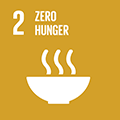



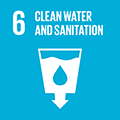



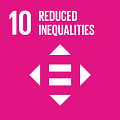
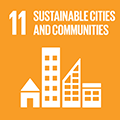
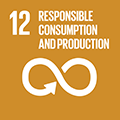
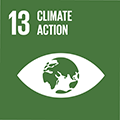
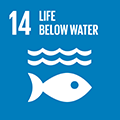
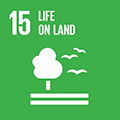

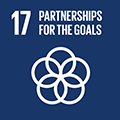
Note to readers
In the spirit of collaboration fostered by the sustainable development goals (SDGs), the data for the Canadian Indicator Framework (CIF) are available through the Canadian Indicator Framework for the Sustainable Development Goals data hub, which was developed based on a platform created by the international community to facilitate and standardize the dissemination of SDG data. The data hub will be updated regularly to reflect the most current available data, new features and related analytical products.
The CIF and the recently released Quality of Life Framework are complementary. More information on the relationship between both frameworks can be found on the FAQ (frequently asked questions) page on the data hub.
Products
The "Canadian Indicator Framework for the Sustainable Development Goals" (11260004) is now available.
Contact information
For more information, or to enquire about the concepts, methods or data quality of this release, contact us (toll-free 1-800-263-1136; 514-283-8300; STATCAN.infostats-infostats.STATCAN@canada.ca) or Media Relations (613-951-4636; STATCAN.mediahotline-ligneinfomedias.STATCAN@canada.ca).
- Date modified:
